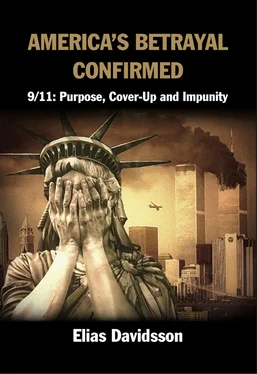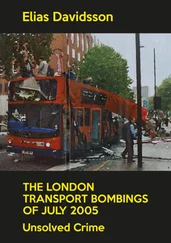Foreign policy and military experts identified in the early 90s a garden-variety of potential threats to perceived U.S. interests – so-called rogue states, the drug trade, threats to sources of raw materials, access to Mid-East oil, terrorism and more – none of which could have provided a focus for American foreign policy.
The communiqué of the North Atlantic Council of 6-7 June 1991 stressed that NATO members prepare to address “other unpredictable developments that are beyond the focus of traditional Alliance concerns, but that can have direct implications on our security” and the “need to address broader issues and new global challenges.”{44} The Council did not specify any global challenges that could in the future have direct implications on NATO members’ security.
Phil Williams, Paul Hammond and Michael Brenner elaborated in 1993 on the need for public legitimation to maintain U.S. leadership in NATO: “Another difficulty with the effort to maintain U.S. leadership in NATO is that of domestic legitimacy… Preserving an alliance without an enemy and a strategy without a threat will not be easy…Without an external threat that acts as rallying point, unifying focus and target, the rampant pluralism and sectionalism of the U.S. political system may be impossible to overcome.”{45}
Both NATO hesitations and the Defense Planning Guidance suggest a frantic search for justifications to maintain or even extend the role of the Western Alliance. Yet the threats listed in official documents appear surprisingly vague, as discussed earlier with relation to the Defense Planning Guidance. Some even appear puzzlingly implausible.
Peter Jenkins, writing in The Independent in November 1991, illustrated the confusion prevailing at the time:
Suppose in the circumstances of today an American president were to propose contributing a 150,000- strong standing army to a military alliance for the purpose of defending Western Europe. Defend it against what, Congress would want to know? ...in the long run it is difficult to see how its cohesion [of NATO] can survive in the absence of any coherent external threat. Islamic fundamentalism is an alarming and destabilising force in the world, but can we imagine seriously the Muslim hordes once more at the gates of Vienna or Warsaw? Russia, more plausibly, could degenerate into a morbidly nationalistic state heavily armed with nuclear weapons, but it is hard to imagine such a Russia embarking on a course of western expansionism. Proliferation of nuclear weapons around the Mediterranean, or even further afield, in time may give new relevance to the doctrine of minimal nuclear deterrence towards which Nato is implicitly moving. Yet these contingencies do not mix into a cement of threat in any way comparable to the Soviet menace as construed during the Cold War.{46}
(6) The ideal threat perception: Focused, durable, credible, useful
(a) A focused threat
Foreign policy commentators have for decades called for, and often lamented the lack of, a coherent and focused foreign policy.
In 1993 the editorial of the Christian Science Monitor called for a “more certain foreign policy in which American power and purpose are aligned” and deplored that the “White House still lacks a focused foreign policy.”{47}
In 1994, Walter R. Mears, vice president of Associated Press, cited President Clinton saying that “without a disciplined, focused foreign policy, overseas problems would swarm in and divert him from the home-front issues he wants to handle.”{48}
In 1995 we have Sen. McCain criticizing President Clinton for a “ lack of focus and a lack of priority and threats by the President of the United States to send us -- our American troops -- almost anywhere....There's got to be a more coherent and focused foreign policy so the American people are comfortable as to where their young men and women might go.”{49}
In 1998, R.C. Longworth, senior writer of the Chicago Tribune wrote: “When everything is important, nothing has priority. Various think tanks and seminars have tried to outline a focused foreign policy for a post-Cold War America, with limited impact. [...] A blue-ribbon commission gathered by Harvard turned out a report called "America's National Interests" that noted a "drift" in foreign policy because the former single-minded goal of defeating communism has been replaced by a wish list of desirable goals.”{50}
Senator John McCain addressed in 1999 the Arab American National Leadership Conference, saying: "I finally want to sum up by saying [...] what we need is a consistent, focused foreign policy… I believe -- that the United States of America can be the greatest force for good in the history of this world."{51}
President Reagan may have provided the clue for the lack of a U.S. focused foreign policy during the 1990s. In a speech he held in Chicago in 1982 he countered charges that his administration had not as yet developed a coherent foreign policy. He said he did not believe it was necessary "to spell out in detail and in advance a formula which will guide our every move in international relations.”{52} Did U.S. leaders, after the demise of the Soviet Union, proceed according to Reagan’s advice of discretion, while they were preparing the Global War on Terror launched on 9/11?
John Lewis Gaddis, mentioned earlier, emphasized in mid-1989 the need for a focused adversary that “has the effect of shaking people up within the bureaucracy in a major way”:{53}
Kreisler: You’re saying that having a clearly focused adversary was important for contributing to a democracy’s ability to have a clear-cut strategy.
Gaddis: Sure. One of the things Kennan always said about Stalin was that Stalin always required an outside enemy to provide a justification for his own rule, to provide coherence, legitimacy. But I would not limit it just to Stalin under the Soviet Union. It seems to me that you could make the same argument about the United States, and about the NATO alliance in particular…But as that sense of clear and present danger begins to erode, then arguments about priorities, objectives, policies begin to surface, as we see very clearly right now in the NATO alliance. So, to an extent, coherence in an alliance structure, and consensus in foreign policy, does depend on a sense of a threat out there…
Kreisler: Do you think an immediate crisis would get our juices stirring, so to speak? An economic depression, an environmental catastrophe, is that what you have in mind? Or do you have in mind an ongoing, continuous threat?
Gaddis: If you can use 1941 or 1947 as analogies, it would have to be something a little more specific than just a Great Depression, it would have to be something like the fall of France in 1940, or something like the perceived crisis over Greece and Turkey in 1947. Something that, even though its influence may have been exaggerated, it has the effect of shaking people up within the bureaucracy in a major way. I don’t see anything like that out there this time because, again, we’re dealing with a very different kind of situation. We were dealing with enemies then, perceived enemies. If the Gorbachev strategy of depriving us of an enemy continues, then that element is not going to be present, and it may be more difficult to formulate something.
(b) A durable threat
The ideal new threat had to last many decades for more than ideological reasons. Senator Sam Nunn explained:
The forces and equipment we used during Operation Desert Storm … were in large part based on defense decisions made 10-20 years ago. The decisions we make this year will affect our military capability 10 years from now and 20 years from now.{54}
Dick Cheney, at the time Secretary of Defense, referred equally to the long-term need for a focused threat, because “decisions we’re making now will shape the forces available twenty years from now.” He emphasized that “America cannot base its future security on just a shaky record of prediction or a prudent recognition of uncertainty.”{55} He thus made it clear that the durability of a threat perception is a requirement for military planning.
Читать дальше












